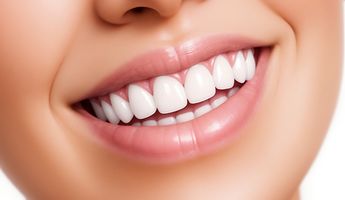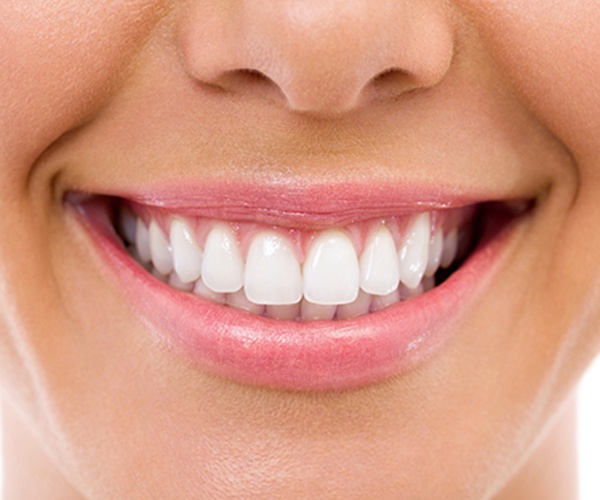Teeth Whitening in Ireland
Search and Compare the Best Clinics and Doctors at the Lowest Prices for Teeth Whitening in Ireland

Find the best clinics for Teeth Whitening in Ireland
No pricing info available
Mexico offers the best prices Worldwide
Price: $ 11
From 15 verified reviews
Edin Mulavdic, 03 April 2020
Very professional staff. Would definitely recommend.
- Home
- Ireland
WHY US?
At Medijump, we're making medical easy. You can search, compare, discuss, and book your medical all in one place. We open the door to the best medical providers worldwide, saving you time and energy along the way, and it's all for FREE, no hidden fees, and no price markups guaranteed. So what are you waiting for?

Free

Best Price

Widest Selection

Risk-Free
What you need to know about Teeth Whitening in Ireland

Teeth whitening sometimes referred to as teeth bleaching, is a cosmetic procedure to lighten the color of your teeth. It is ideal for people with healthy, unrestored teeth and gums. The procedure does not work on people who have any type of false teeth, including crowns, implants, dentures, and veneers.
What does a Teeth Whitening Procedure Involve?
There are two different options to undergo professional teeth whitening: in-office treatment and at-home treatment through a dentist. Both options use peroxide-based bleaching agents (carbamide or hydrogen peroxides). With in-office treatment, your dentist will apply a product or solution that contains around 15% to 43% peroxide. It works quickly and the effect lasts longer than an at-home treatment. With at-home treatment, your dentist will make you custom-fit tray filled with a bleaching gel that contains around 3% to 20% peroxide. You will have to place this tray over your teeth for 30 minutes to an hour a day for a few weeks. Both in-office and at-home treatments do not involve any anesthesia.
How Long Should I Stay in Ireland for a Teeth Whitening Procedure?
Some dentists can whiten your teeth in a single two-hour appointment, meaning you can go home right after the procedure. However, some dentists may require several in-office visits until you get your desired result. Also, if you have at-home treatment, you may need two separate appointments with your dentist. In this case, plan to stay in Ireland for around 3 to 7 days.
What's the Recovery Time for Teeth Whitening Procedures in Ireland?
Teeth whitening requires almost no downtime. Right after the procedure, your teeth may become sensitive to hot and cold, but you can go back to your normal activities, exercises, and work immediately after the procedure.
What sort of Aftercare is Required for Teeth Whitening Procedures in Ireland?
To maintain the results of the procedure, you need to make sure you brush your teeth twice a day as well as flossing and using an antibacterial mouthwash. You should also avoid food and beverage that can stain your teeth (acidic and tannin-rich food), such as tea, coffee, wine, carbonated beverages, sports drink, sauces, berries.
What's the Success Rate of Teeth Whitening Procedures in Ireland?
Teeth whitening via your dentist are highly effective and safe. However, it may be less effective for people who have brown teeth and it only works best on people with yellow teeth. If you have purple or gray teeth, this procedure probably will not work at all. Also, the procedure carries some side effects and risks, including teeth sensitivity and irritated gums.
Are there Alternatives to Teeth Whitening Procedures in Ireland?
If you are not a candidate for teeth whitening, your alternative includes porcelain veneers, dental crown, dental bonding, and tooth-colored fillings. If you do not want to go to the dentist to undergo the procedure, some over-the-counter products can be your option. However, bear in mind that over-the-counter products may not work as effectively as professional teeth whitening.
What Should You Expect Before and After the Procedure
Before the procedure, you may have discolored teeth that can make you feel very self-conscious and after the procedure, you will have a brighter smile that will help you become more confident.
Whilst the information presented here has been accurately sourced and verified by a medical professional for its accuracy, it is still advised to consult with your doctor before pursuing a medical treatment at one of the listed medical providers
No Time?
Tell us what you're looking for and we'll reachout to the top clinics all at once
Enquire Now

Popular Procedures in Ireland
Prices Start From $1

Prices Start From $1

Prices Start From $1

Prices Start From $48

Prices Start From $1

Prices Start From $1

Prices Start From $1

Recommended Medical Centers in Ireland for Teeth Whitening

- Interpreter services
- Translation service
- Religious facilities
- Medical records transfer
- Medical travel insurance
- Health insurance coordination
- TV in the room
- Safe in the room
- Phone in the room
- Private rooms for patients available

- Interpreter services
- Translation service
- Religious facilities
- Medical records transfer
- Medical travel insurance
- Health insurance coordination
- TV in the room
- Safe in the room
- Phone in the room
- Private rooms for patients available

- Interpreter services
- Translation service
- Religious facilities
- Medical records transfer
- Medical travel insurance
- Health insurance coordination
- TV in the room
- Safe in the room
- Phone in the room
- Private rooms for patients available

- Interpreter services
- Translation service
- Religious facilities
- Medical records transfer
- Medical travel insurance
- Health insurance coordination
- TV in the room
- Safe in the room
- Phone in the room
- Private rooms for patients available

- Interpreter services
- Translation service
- Religious facilities
- Medical records transfer
- Medical travel insurance
- Health insurance coordination
- TV in the room
- Safe in the room
- Phone in the room
- Private rooms for patients available

- Interpreter services
- Translation service
- Religious facilities
- Medical records transfer
- Medical travel insurance
- Health insurance coordination
- TV in the room
- Safe in the room
- Phone in the room
- Private rooms for patients available

- Interpreter services
- Translation service
- Religious facilities
- Medical records transfer
- Medical travel insurance
- Health insurance coordination
- TV in the room
- Safe in the room
- Phone in the room
- Private rooms for patients available

- Interpreter services
- Translation service
- Religious facilities
- Medical records transfer
- Medical travel insurance
- Health insurance coordination
- TV in the room
- Safe in the room
- Phone in the room
- Private rooms for patients available

- Interpreter services
- Translation service
- Religious facilities
- Medical records transfer
- Medical travel insurance
- Health insurance coordination
- TV in the room
- Safe in the room
- Phone in the room
- Private rooms for patients available

- Interpreter services
- Translation service
- Religious facilities
- Medical records transfer
- Medical travel insurance
- Health insurance coordination
- TV in the room
- Safe in the room
- Phone in the room
- Private rooms for patients available
Teeth Whitening in and around Ireland
Introduction
Ireland, also known as the Republic of Ireland, is a country located in north-western Europe that occupies 26 of 32 counties on the island of Ireland. The country’s breath-taking landscape, wonderful people, and fascinating history have made it an unforgettable destination for many visitors. Aside from its beauty, more and more people also come to Ireland for high-quality healthcare. The country is a newcomer to the medical tourism market. However, it’s seen as an increasingly attractive destination due to the reasonably priced and high standard of clinical care available in the country. Most foreign patients come for cosmetic surgery and dental treatments, but many hospitals and clinics in the country offer a wide variety of services, such as cardiology, pathology, pulmonary, and gynecology. Also, the Joint Commission International has accredited several hospitals in the country, most of which are located in Dublin.
Popular Cities and Regions in Ireland
Ireland’s capital and largest city, Dublin, is the most popular tourist destination within the country. In fact, it’s the fourth most visited European capital. It’s filled with excellent pubs serving the perfect pint of Guinness, amazing Georgian architecture, and layers of fascinating history. Tourists in this city usually visit the Guinness Storehouse Factory, tour the Old Jameson Distillery, admire the Spire of Dublin, explore Dublin Castle, and marvel at the beauty of St. Patrick’s Cathedral. Another famous city is Cork, which is the second-largest city in the country. It’s a youthful cosmopolitan city packed with artisan coffee bars and snug pubs. Tourists usually come to kiss the Blarney Stone for good luck, enjoy the coastal landscape in Mizen Head, or hike around Gougane Barra. Other popular cities and towns include Galway, Killarney, Kilkenny, and Letterkenny.
Transport in Ireland
The main airport in Ireland is Dublin Airport. It connects the country with numerous cities around the world, including New York, Abu Dhabi, and Hong Kong. Trains and buses are available to travel around the country. However, public transportation is generally sparse in rural areas. Therefore, renting a car is the best mode of transport. Taxis and Uber are available to travel inside major cities.
Visas in Ireland
Ireland has opted out of the Schengen Area. The country allows all EU citizens, as well as citizens of 56 other countries (such as the UAE and the US), to stay without a visa for up to 90 days. Citizens of other countries are required to apply for a visa in advance.
Weather in Ireland
Summer (June – September) provides plenty of sunshine and lower levels of rainfall, with an average temperature of 14°C - 16°C. Winter (October – February) is chilly, with ample rainfall and some snow. Spring and autumn are generally pleasant, with warmer temperatures and more sunshine.
Additional Info
- Local Currency: The official currency is the euro. 1 EUR is approx. 1.08 USD.
- Money & Payments: ATMs are easy to find. Credit and debit cards are widely accepted. Tipping is expected in some places, typically 10% for decent service.
- Local Language: There are several languages used in Ireland. English has been the predominant first language since the late 18th century, but Irish is still widely used by a small percentage of the population.
- Local Culture and Religion: The constitution of Ireland guarantees freedom of religion. Christianity is the largest religion. However, Islam, Hinduism, Judaism, Buddhism, Neo-Paganism, and other religions are present.
- Public Holidays: Some of the most celebrated public holidays are New Year’s Day, St. Patrick’s Day, Easter Monday, Christmas Day, and St. Stephen’s Day.
Popular Searches
- Plastic Surgery in Thailand
- Dental Implants in Thailand
- Hair Transplant in Thailand
- Breast Augmentation Thailand
- Gastric Sleeve in Thailand
- Gender Reassignment Surgery in Thailand
- Laser Hair Removal in Bangkok
- Botox in Bangkok
- Dermatology in Bangkok
- Breast Augmentation in Bangkok
- Coolsculpting in Bangkok
- Veneers in Turkey
- Hair Transplant in Turkey
- Rhinoplasty in Turkey
- Stem Cell Therapy in Mexico
- Rhinoplasty in Mexico
- Liposuction in Mexico
- Coolsculpting in Tijuana
- Rhinoplasty in Korea
- Scar Removal in Korea
- Gastric Sleeve in Turkey
- Bone Marrow Transplant in India
- Invisalign in Malaysia
- Plastic Surgery in the Dominican Republic
- Tummy Tuck in the Dominican Republic
- Plastic and Cosmetic Surgery in Poland
- Rhinoplasty in Poland
- Hair Implant in Poland
- Dental Implants in Poland
- IVF in Turkey
